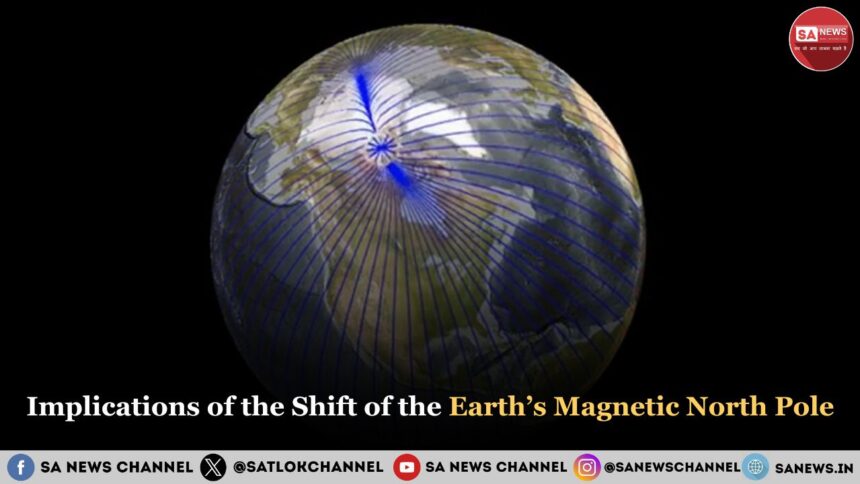Recent scientific research has shed light on significant changes occurring in the Earth’s magnetic North Pole. These shifts have profound effects on charged particles in the Earth’s magnetosphere, impacting space weather predictions and satellite operations.
Movement of the Magnetic North Pole
- The Earth’s magnetic North Pole has been shifting from Canada to Siberia for over a century.
- Initially located in Canada, the pole has been moving rapidly, reaching a speed of approximately 50 km per year by 2020.
- This movement alters the strength and shape of the Earth’s magnetic field, influencing the behavior of charged particles in space.
- The World Magnetic Model, developed by the British Geological Survey and the National Oceanic and Atmospheric Administration (NOAA), tracks the pole’s position.
- This model is updated every five years to reflect changes in the Earth’s magnetic field.
Impact on Charged Particles and Radiation Belts
- Electrons and other charged particles are significantly influenced by the Earth’s magnetic field.
- These particles are primarily located in the Earth’s radiation belts, which extend above the atmosphere.
- Their movement is dictated by the magnetic field’s strength and orientation.
- As the magnetic North Pole shifts, the trajectories of these particles change, altering their entry points into the Earth’s atmosphere.
Scientific Studies and Key Findings
- Researchers used the International Geomagnetic Reference Field Model to analyze the movement of energetic protons.
- Their findings indicate that as the magnetic North Pole moves toward Siberia, regions that previously received high-energy particle influxes now experience reduced exposure.
- The minimum entry point for these particles has shifted by up to 1,200 km.
Effects on Satellites and Space Weather
- Changes in the Earth’s magnetic field directly impact satellites, particularly those in polar orbits.
- The altered movement of charged particles can disrupt satellite electronics, causing operational issues.
- Variations in the magnetic field may also influence satellite trajectories and orbital stability.
- Additionally, heating of the upper atmosphere due to shifting magnetic activity can create drag on satellites, leading to increased fuel consumption and orbital decay.
Historical Context of the Magnetic North Pole
- The magnetic North Pole was first discovered by Sir James Clark Ross in northern Canada in 1831.
- Since its discovery, the pole has shifted approximately 400 km northwest from its original position.
- Historical records show that over the past 400 years, the pole has moved at an average speed of 10 km per year.
- Recent observations suggest that its movement has accelerated in the past few decades, necessitating continuous monitoring.
Conclusion
The shifting magnetic North Pole is not just a geological curiosity—it has far-reaching consequences for space weather, satellite operations, and Earth’s electromagnetic environment. Scientists continue to study these changes to enhance satellite safety, improve navigation systems, and refine space weather predictions. Continuous tracking of this phenomenon remains crucial for both scientific research and technological advancements.
Frequently Asked Questions (FAQs)
Q1: What is the Earth’s magnetic North Pole?
A: The Earth’s magnetic North Pole is the location where the planet’s magnetic field lines converge vertically, creating a strong magnetic influence.
Q2: When was the magnetic North Pole discovered?
A: The magnetic North Pole was discovered in 1831 by British explorer James Clark Ross.
Q3: What is a simulation study?
A: A simulation study is a computer-based experiment that generates data using pseudo-random sampling from a defined probability distribution to model real-world scenarios.
Q4: What is the simulation method?
A: The simulation method involves creating a mathematical or computational model to replicate real-world systems and predict their behavior under various conditions.









